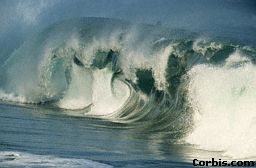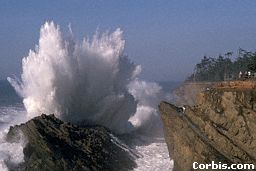The Explaination
![]()
"Wave prediction is "the art" of making educated guesses
as to where to surf, or whether it's worth going for a surf. These "guesses"
are based upon a number of factors that are combined together, then interpreted
and finally, a conclusion, or decision reached. To predict waves successfully
we need to have an understanding of the earth's weather, understand how
swell is generated, possess a tide table and have a good local knowledge
of the area you surf (i.e. the breaks in your area and the best conditions
they work on)."

Elements of Wave Prediction
Wave prediction can be divided into two facets. These
are:
· dynamic elements
· static elements
Dynamic elements are those that
change. The change can occur over a period of few days to a matter of 30
minutes (sometimes less). Wind, swell and tides are examples of dynamic
elements. It can be argued that shifting sand banks caused by wave action
and long shore currents are dynamic. Sometimes changes can occur to sand
banks over a couple days, but rarely do significant changes occur within
this time at most sandy beaches.
Static elements include the
breaks themselves, both beach and reef breaks. These elements change over
large time scales in comparison to dynamic elements.
In wave prediction the most
important factors that determine what the surf is going to be like are
the dynamic elements. Secondary to this are the static elements (the breaks
themselves).

Swell Formation
Swell is produced by wind blowing
over the ocean. The factors that control the size of the swell are the
speed of the wind, the length of time it blows and the size, or length
of the area it blows over (i.e. the Fetch). Swell sizes can be mathematically
calculated using the latter parameters, but I'm not going to get into the
gory details here. Have a look at the physics page for that information.
![]()